The opening inside the heuheu
type of glyph seems to correspond to the opening at the horizon
in the east,
 |
|
East |
West |
created for the Sun to rise through at dawn (spring equinox) - beginning with his
(in this case the Lion's) 'nose' - al minhar:
|
454 |
 |
16 |
 |
|
AL TARF
The End |
AL MINHAR AL ASAD
The Nose |
|
471 (= 1.5
* 314) |
day zero
(0) |
|
472 (= 16
* 29½ = 8 * 59 = 4 * 118) |
According to the Egyptian diagram further down below there
were 19
* 5 = 95 (= 195 - 100) nights before their Sun 'beetle'
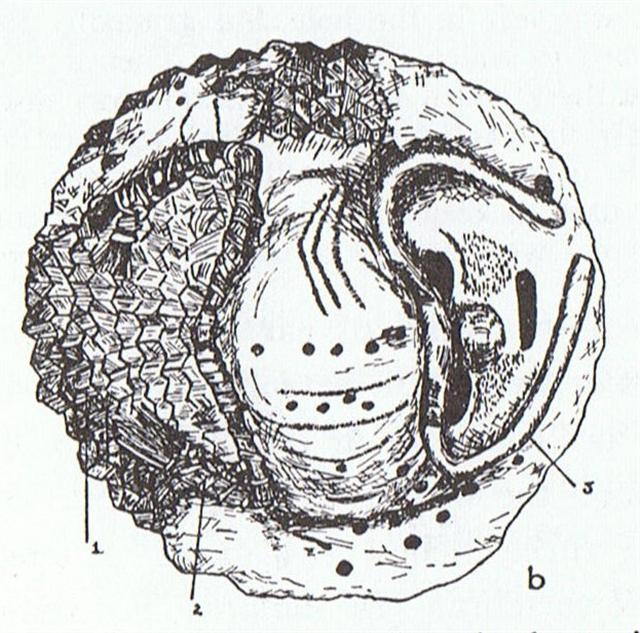
would crawl out; be born and uplifted:
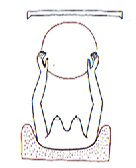
... Watching TV does give some
knowledge. For instance was I told that modern
science now had discovered that the scarab beetle
had the unique ability to orient itself from the
direction of the Milky Way. Surely, I thought, this
must once upon a time had been well known (common
knowledge) ...
|
Night sky (95)
|
|
 |
|
Lower
Egypt ← N
S
→ Upper Egypt
E
|
...
Now the deluge was caused by the male waters from
the sky meeting the female waters which issued forth
from the ground. The holes in the sky by which the
upper waters escaped were made by God when he
removed stars out of the constellation of the
Pleiades; and in order to stop this torrent of rain,
God had afterwards to bung up the two holes with a
couple of stars borrowed from the constellation of
the Bear. That is why the Bear runs after the
Pleiades to this day; she wants her children back,
but she will never get them till after the Last Day
...
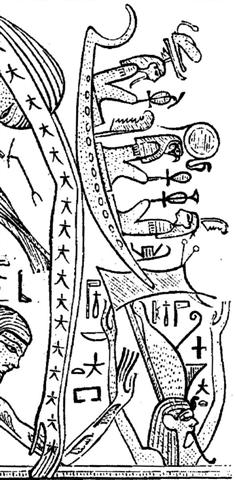
Perhaps the pair of stars in the top right corner of
the Pleiades net - to the right of the 'nose' of the
late at night ship (adorned with 12 stars) -
illustrated a pair of children borrowed from Ursa Major.
... Another name for the Goddess
of the Mill was Artemis Calliste, or Callisto ('Most
Beautiful'), to whom the she-bear was sacred in
Arcadia; and in Athens at the festival of Artemis
Brauronia, a girl of ten years old and a girl of
five, dressed in saffron-yellow robes in honour of
the moon, played the part of sacred bears. The Great
She-bear and Little She-bear are still the names of
the two constellations that turn the mill around. In
Greek the Great Bear Callisto was also called
Helice, which means both 'that which turns' and
'willow-branch' - a reminder that the willow was
sacred to the same Goddess ...
... Etalook refers to the
'aagruuk' as 'labrets' (the circular
lower-lip ornaments of some Western Arctic Eskimo
groups, certainly evoke an astral image if we recall
that early Inuit graphic representations of
stars were usually circular ...) giving them, it
seems, an alternate name,
ayaqhaagnailak,
'they prohibit the playing of string games': They
[the aagruuk stars] are the ones that
discourage playing a string game ... That's what
they're called, ayaqhaagnailak, those two
stars... When the two stars come out where is no
daylight, people are advised not to play a string
game then, but [play instead] with hii, hii, hii...
toy noisemakers of wood or bone and braided sinew...
Our parents tell us not to play the string games
anymore ...
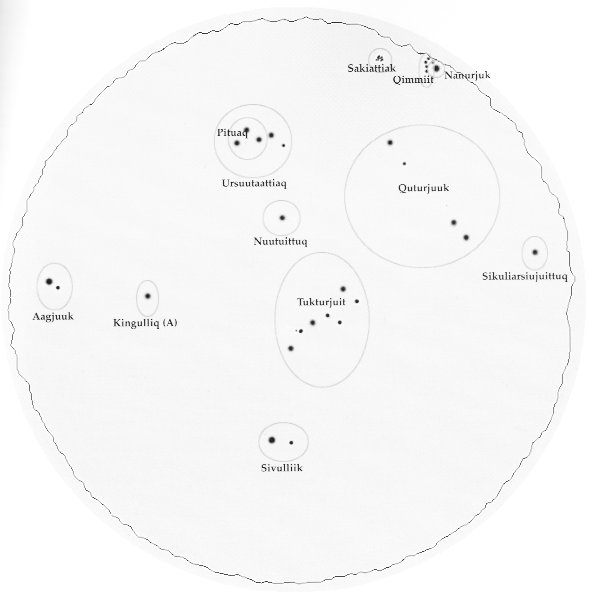
There is only one glyph in the B text which at first
sight seems to
correspond to heuheu in Ga3-18:
|
Heu.
Offspring of parents from two different
tribes, person of mixed descent,
e.g. father Miru, mother
Tupahotu. Heuheu, body
hair (except genitals and armpits).
Vanaga. 1. Heheu; ivi heheu,
the cachalot, bone needle; hakaheu,
spade, to shovel, to grub up, to scratch
the ground, to labor; rava
hakaheu, laborious, toilsome. 2.
Hakaheu, affair. Churchill. M.
Heu, to separate, to pull asunder;
the eaves of a house; heu, a
single hair; hau. to hew; heru,
to comb; huru, hair on the body;
down; feathers; maheu, scattered;
maheuheu, shrubs; mahuru,
scrub; heuea, to be separated.
Text Centre.
Nonoma ran, he quickly went to Te
Hikinga Heru (a ravine in the side
of the crater Rano Kau) and
looked around. There he saw the double
canoe way out near the (offshore)
islets, and the two (hulls of the canoe)
were lashed together. |
|
JUNE
6 (157 = 314 / 2) |
erua
ra manu |
 |
 |
|
Ga3-18 (260 - 183 = 77) |
Bb11-20 (421 + 438 = 859) |
|
CLOSE TO THE
SUN: |
-2.jpg) |
|
AL MINHAR AL ASAD (*141) |
|
Aug 9 (221
= 157 + 64) |
|
"June
29 (180 = 3 * 60) |
|
CLOSE TO THE FULL MOON: |
|
*324
= *141 + *183 |
|
Febr 8
(404 = 221 + 183 = 365 + 39) |
|
"Dec
29 (363 = 3 * 121) |
|
DEC
6 (*260 = *324 - *64) |
|
The front (first) side of
the presumably last moai statue hewn
on Easter Island (viz. Hoa Hakanana'ia
placed high
up at O-rongo in the southwestern
corner of the island at the rim of the
volcano Rano Kau) looks typically as
all the rest of them, but his back side
(representing what came later) is
extraordinary, for it is filled with
descriptions of the Bird Man season. A
prominent circle is located above his
midline, in the middle between the
pair of birds above - the one at right with a long
beak (as that of the Toucan
→ *363)

and the lower bird
(compressed) at left with hardly any beak at
all. This dorsal diagram is more in agreement with
the picture in Bb11-20 than with that in
Ga3-18. Winter at left and in front Summer,
the Hole in between at spring equinox.
Nana.
Mgv.: 1. To
look at, to view. Ta.: nana,
to see, to look at. Ha.: nana,
to view attentively. 2. Angry, offended.
Ma.: nana,
in a passion. Churchill. Nanagi,
to tear with the teeth. Nanai,
spider; kahu nanai,
cobweb. Churchill. Pau.: Nanao,
to insert the hand. Mgv.: nanao,
to take fish out of a wicker basket. Ta.:
nanao,
neneo,
to introduce the hand. Mq.: nanao,
to grope in. Sa.: naonao,
to feel for by introducing the hand. Ma.:
nao,
to feel with the hand. Churchill.
...
Furthermore, according to the G tablet we
could also read how the Bird Man season
(late July to early August) might have
coincided with the right ascension line down
from the South Pole star, Dramasa (σ
Octantis) [Ga3-14], as seen close to the
Full Moon in
August 5 (*320 - *183)
... |
The
opening created in between the pair of sun birds (erua
ra manu) is depicted not high up but low
down (just above the horizon).
.jpg)
|
DEC 1 (*255 =
*355 - *100) |
2 (336 = 4 * 84) |
 |
 |
|
Gb1-26 |
Gb2-1 (256 = 4 * 64) |
|
21h (319.6)
ARMUS =
η
Capricorni
(319.0),
DORSUM =
θ
Capricorni
(319.3),
TSOO = 24 Capricorni
(319.7) |
DRAMASA = σ Oct., χ Capricorni
(320.0),
ν
Aquarii (320.3),
γ
Equulei (320.6),
ο
Pavonis (320.8) |
 |
|
Febr 3 (34) |
4 (400) |
|
°Jan
30
(*315) |
31 (396) |
|
'Jan 7 (*292) |
8 (373) |
|
Christmas Eve (*278) |
"Dec 25 (359) |
|
...That the Sun-gods Dionysus,
Apollo and Mithras were all also
reputedly born at the Winter
solstice is well known, and the
Christian Church first fixed the
Nativity feast of Jesus Christ at
the same season, in the year A.D.
273 [→ 3 * 91].
St. Chrysostom, a century later,
said that the intention was that
'while the heathen were busied with
their profane rites the Christians
might perform their holy ones
without disturbance', but justified
the date as suitable for one who was
'the Sun of Righteousness' ... |
|
CLOSE TO THE FULL MOON: |
|
JUNE 1 (152) |
2 (*73) |
|
ν Cancri (136.0),
TALITHA AUSTRALIS = κ Ursae Majoris
(136.1), ω Hydrae (136.8) |
9h (137.0)
σ¹ Ursa Majoris (137.0), κ Cancri
(137.3),
τ Cancri (137.4), ALSUHAIL (al Wazn,
of the Weight) = λ Velorum
(137.5), σ² Ursa Majoris (137.6), τ
Ursa Majoris (137.7), ξ Cancri
(137.8)
*96.0 = *137.4 - *41.4 |
|
Aug 4 (216) |
5 |
|
°July 31 (212) |
°Aug 1 |
|
'July 8 |
9
(190) |
|
St John's Day (*95) |
"June 25 (176) |
|
CLOSE TO THE SUN: |
 |
 |
|
Ga3-12 |
Ga3-13 (72) |
|
ACUBENS = α Cancri, TALITHA BOREALIS
= ι Ursae Majoris
(135.0), σ Cancri (135.2), ρ Ursa
Majoris (135.6) |
ν Cancri (136.0),
TALITHA AUSTRALIS = κ Ursae Majoris
(136.1), ω Hydrae (136.8) |

|
Egyptian hand |
 |
Phoenician kaph |
 |
Greek
kappa |
Κ
(κ) |
|
Kaph
is thought to have been
derived from a pictogram
of a hand (in both
modern Arabic and modern
Hebrew, kaph
means palm/grip) ...
...
The manik, with
the tzab, or
serpent's rattles as
prefix, runs across
Madrid tz. 22 , the
figures in the pictures
all holding the rattle;
it runs across the
hunting scenes of Madrid
tz. 61, 62, and finally
appears in all four
clauses of tz. 175, the
so-called 'baptism'
tzolkin. It seems
impossible, with all
this, to avoid assigning
the value of grasping or
receiving. But in the
final confirmation, we
have the direct evidence
of the signs for East
and West. For the East
we have the glyph
Ahau-Kin, the Lord
Sun, the Lord of Day;
for the West we have
Manik-Kin, exactly
corresponding to the
term Chikin, the
biting or eating of the
Sun, seizing it in the
mouth.



The
pictures (from Gates)
show east, north, west,
and south; respectively
(the lower two glyphs)
'Lord' (Ahau) and
'grasp' (Manik).
Manik was the 7th
day sign of the 20 and
Ahau the last ... |
|
|
"June 23 (174) |
St John's Day (*95) |
|
DEC 3 |
4 |
5
(339) |
6 (*260) |
 |
 |
 |
 |
|
Gb2-2 |
Gb2-3
(29) |
Gb2-4 |
Gb2-5
(260) |
|
α Oct. (321.5),
δ
Equulei (321.7),
φ
Capricorni (321.8) |
KITALPHA (Part of a Horse) =
α
Equulei
(322.0),
ALDERAMIN (The Right Arm) =
α
Cephei
(322.9) |
DAI = ι Capricorni
(323.5),
β
Equulei (323.8) |
γ
Pavonis (324.1),
YAN = ζ Capricorni
(324.6) |
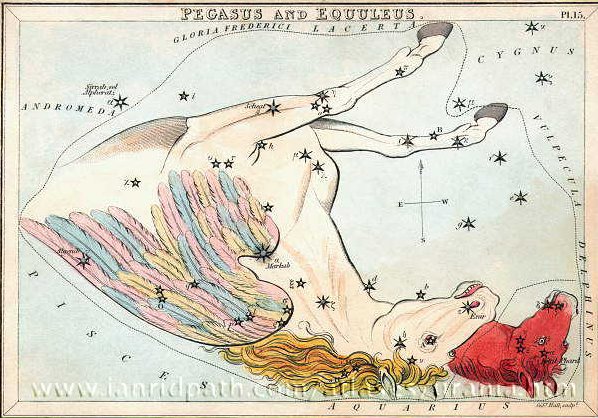 |
|
Febr 5 |
6 |
7
(403) |
8
(*324) |
|
°Febr
1 |
2 |
3 (399) |
4 (*320) |
|
'Jan 9 |
10 (*295) |
11 |
12
(377) |
|
"Dec
26 (360) |
27
(355 + 6 = 19 * 19) |
28 |
29
(363 = 3 * 121) |
|
CLOSE TO THE FULL MOON: |
|
JUNE 3 (154) |
4 (*75) |
5
(156 = 339- 183) |
6 (*77) |
|
κ Pyxidis (138.0), ε Pyxidis (138.5) |
π
Cancri (139.2),
MIAPLACIDUS = β Carinae
(139.3),
TUREIS (Little Shield) = ι Carinae
(139.8) |
No star listed
(140) |
θ
Pyxidis (141.5),
MARKAB VELORUM = κ Velorum
(141.5),
AL
MINHAR AL ASAD (The Nose of the Lion) =
κ Leonis
(141.6),
λ
Pyxidis (141.9) |
|
Aug 6 |
7 |
8
(220) |
9
(*141) |
|
°Aug
2 |
3 |
4 (216) |
6 |
|
'July 10 |
11 (192) |
12 |
13
(*114) |
|
"June
26 (177) |
27 |
28 |
29
(*100) |
|
CLOSE TO THE SUN: |
 |
 |
 |
 |
|
Ga3-15 |
Ga3-16 |
Ga3-17 |
Ga3-18 (260 - 183 =
77) |
|
"June
26 (177) |
27 |
28 |
29
(*100) |
Could it (the hole in Bb11-20) initially have
referred to a hole in "December 29 (anciently the
last day in this month), when the Sun was far down
as regarded from a point north of the equator? Or
could it refer to a hole in "June 29 when the Sun
was far down as observed on Easter Island? Or maybe
both!
The Mesopotamians had placed the nose of their Lion
(Jupiter, Father Light),
straight across from the nose of the Goatfish
(evidently associated with Mars), at the place where
the Eagle flew away with the Dead Man along the
Milky Way river (like how the Scarab of the Sun in
ancient Egypt had oriented himself along the
Celestial River):

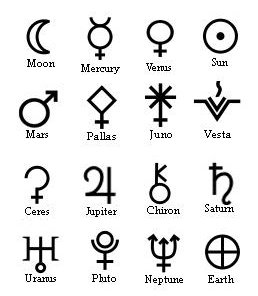
This was simular to how once upon a time at Christmas Eve
Antinous had been abducted by the Talons of the
Falling Eagle (Al Athfar), at the time when the Full Moon simultaneously had
reached Canopus at right
ascension day *95 (= 19 * 5):


And it seems to explain why Itzam-Yeh (alias Ursa
Major) had been defeated in May 28.
|
te hau tea |
tupu te rakau - te
henua |
te hau tea |
tupu te rakau |
 |
 |
 |
 |
|
Ca4-17 |
Ca4-18 |
Ca4-19 (95) |
Ca4-20 |
|
CLOSE TO THE FULL MOON: |
|
Al Han'ah-4 (Brand) /
Maru-sha-pu-u-mash-mashu-7 (Front of the
Mouth of the Twins)
TEJAT PRIOR = η Gemini (93.4),
γ
Monocerotis (93.5),
κ
Aurigae (93.6),
κ
Columbae (93.8)
*52.0 = *93.4 - *41.4 |
FURUD
= ζ Canis Majoris
(94.9) |
Well-22 (Tapir) /
Arkū-sha-pu-u-mash-mashu-8 (Back of the
Mouth of the Twins)
δ
Columbae (95.2),
TEJAT
POSTERIOR = μ Gemini, MIRZAM (The
Roarer) = β Canis Majoris (95.4),
CANOPUS (Canopy) = α Carinae
(95.6),
ε
Monocerotis (95.7),
ψ1
Aurigae (95.9)
*54.0 = *95.4 - *41.4 |
No star listed (96) |
|
June
22 |
23 |
24
(St John's Day) |
25 (176) |
|
'May 26 |
27 |
28
(148) |
29 |
|
CLOSE TO THE SUN: |
|
Dec
22 |
23 |
24
(Christmas Eve) |
25 (359) |
|
η Sagittarii (276.9) |
Purva Ashadha-20 (Elephant Tusk, Fan,
Winnowing Basket) |
KAUS BOREALIS = λ Sagittarii
(279.3) |
|
KAUS MEDIUS
= δ Sagittarii,
κ Lyrae (277.5),
TUNG HAE (Heavenly Eastern Sea) = η
Serpentis
(277.7),
SHAOU PIH (Minor Minister) = φ Draconis
(277.8),
KWEI SHE = χ Draconis
(277.9) |
φ
Oct. (278.1),
KAUS AUSTRALIS =
ε
Sagittarii
(278.3),
ξ
Pavonis (278.4),
AL ATHFAR (The Talons of the Falling
Eagle) =
μ
Lyrae
(278.6)
*237.0 = *278.4 - *41.4 |
|
'Nov 25 |
26 |
27
(331) |
28 |
|
... As has already been mentioned, the
Delphians worshipped Dionysus once a
year as the new-born child, Liknites,
'the Child in the Harvest Basket', which
was a shovel-shaped basket of rush and
osier used as a harvest basket, a
cradle, a manger, and a winnowing-fan
for tossing the grain up into the air
against the wind, to separate it from
the chaff. The worship of the Divine
Child was established in Minoan Crete,
its most famous early home in Europe. In
1903, on the site of the temple of
Dictaean Zeues - the Zeus who was yearly
born in Rhea's cave at Dicte near
Cnossos, where Pythagoras spent 'thrice
nine hallowed days' [27] of his
initiation - was found a Greek hymn
which seems to preserve the original
Minoan formula in which the
gypsum-powdered, sword-dancing Curetes,
or tutors, saluted the Child at his
birthday feast. In it he is hailed as
'the Cronian one' who comes yearly to
Dicte mounted on a sow and escorted by a
spirit-throng, and begged for peace and
plenty as a reward for their joyful
leaps ...
 |
The First 3-stone Place
was a week earlier, viz. in May 21, although
35 years later.
| te
hokohuki |
te
moko |
te
hokohuki |
|
Hoko. 1. To
jump; to rock or swing
in rhythm with the chants in
festivals, as was the ancient
custom; an ancient dance.
He to'o mai e te hoa manu i te
mamari ki toona rima, he ma'u, he
hoko, the 'bird master' receives
the egg in his hand and carries it,
dancing. 2. Number prefix: 'in a
group of...': hokotahi,
alone; hokorua, in a group of two (also companion, e
hakarere te kai mo toou hokorua,
leave some food for my companion);
hakatoru, in a group of
three, etc.; hokohía, in a
group of how many? Hokohía ana
oho koe ki te rano? With how
many people will you go to the
volcano? Vanaga. 1. To traffic, to
trade, to buy, to ransom (hoò);
hoòa te kaiga, to buy land.
2. To sport, to play. Churchill.
Move the body to and fro with the
rythm of a song. Barthel.
Huki. 1. Pole attached to
the poop from which the
fishing-net is suspended: huki
kupega. 2. Digging stick. 3. To
set vertically, to stand
(vt.). 4. Huki á te mahina,
said of the new moon when both its
horns have become visible. Vanaga.
1. To post up, to publish. 2. To cut
the throat (uki). Mq.: Small
sticks which close up the ridge of a
house. Ha.: hui, the small
uniting sticks in a thatched house.
Churchill. Standing upright.
Barthel. M. Spit for roasting. Te
Huki, a constellation. Makemson.
Hukihuki. 1. Colic. 2. To
transpierce, a pricking. 3. To sink
to the bottom. Churchill. |
 |
 |
 |
|
Ca4-10 |
Ca4-11 |
Ca4-12 (88) |
|
CLOSE TO THE FULL MOON: |
|
μ Columbae (86.1), Saiph (86.5), ζ
μ
Columbae,
SAIPH (Sword) = κ Orionis
(86.5),
τ
Aurigae,
ζ
Leporis (86.6) |
υ Aurigae (87.1), ν Aurigae (87.2),
WEZN (Weight) = β Columbae,
δ Leporis (87.7),
TZE (Son) = λ Columbae
(87.9) |
Ardra-6 (The Moist One) /
ANA-VARU-8 (Pillar to sit by)
χ¹
Orionis,
ξ
Aurigae (88.1),
BETELGEUZE = α Orionis
(88.3),
ξ
Columbae (88.5),
σ
Columbae (88.7)
ZUBEN ELGENUBI (α Librae) |
 |
|
CLOSE TO THE SUN: |
|
MULIPHEN (Oaths) = γ Ophiuchi
(269.0),
BASANISMUS = G Scorpii
(269.5),
PHERKARD (Dim One of the
Two Calves) = δ Ursae Minoris
(269.9) |
PTOLEMY CLUSTER = M7 Scorpii
(270.5),
GRUMIUM (Lower Jaw) = ξ Draconis
(270.9) |
RUKBALGETHI GENUBI (Bending Claw) =
θ Herculis
(271.1), ξ Herculis (271.5),
ETAMIN (Head) = γ Draconis,
ν Herculis (271.7), ν Ophiuchi
(271.8) |
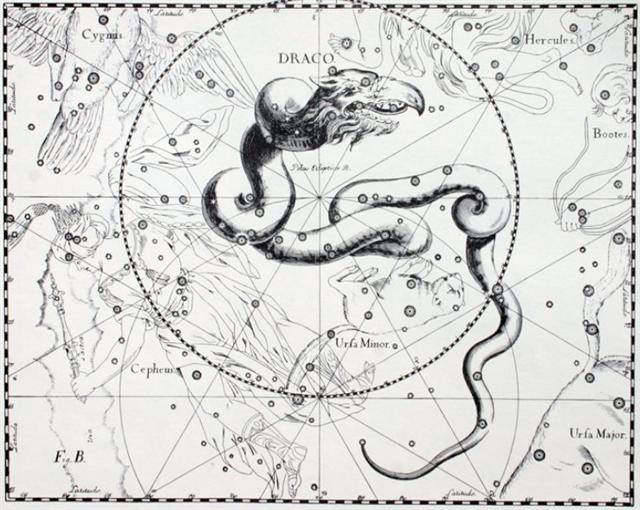 |
Indeed this was probably at the very beginning,
as we can remember from the notches on the
ancient
mammoth bone:

|









-2.jpg)

.jpg)














